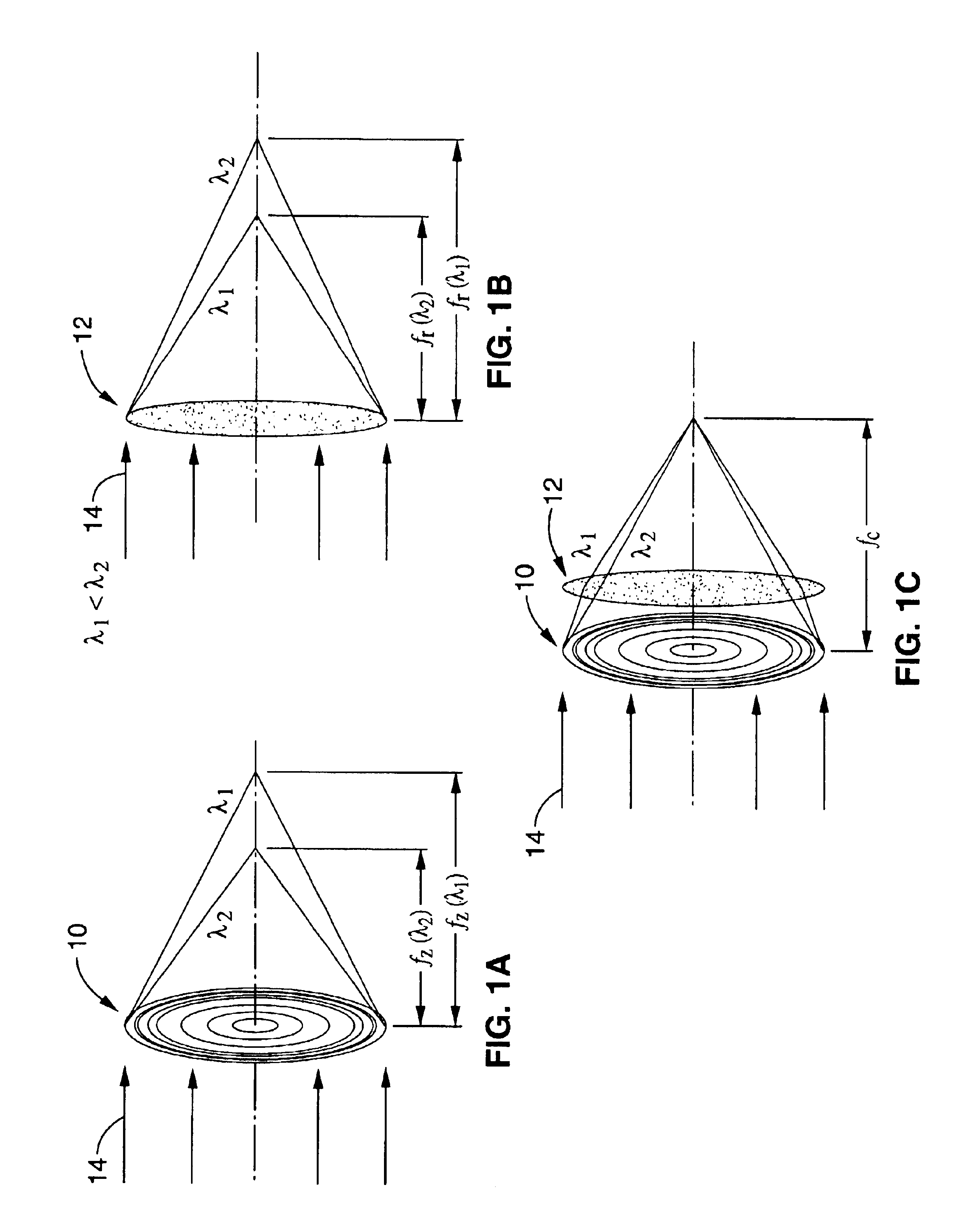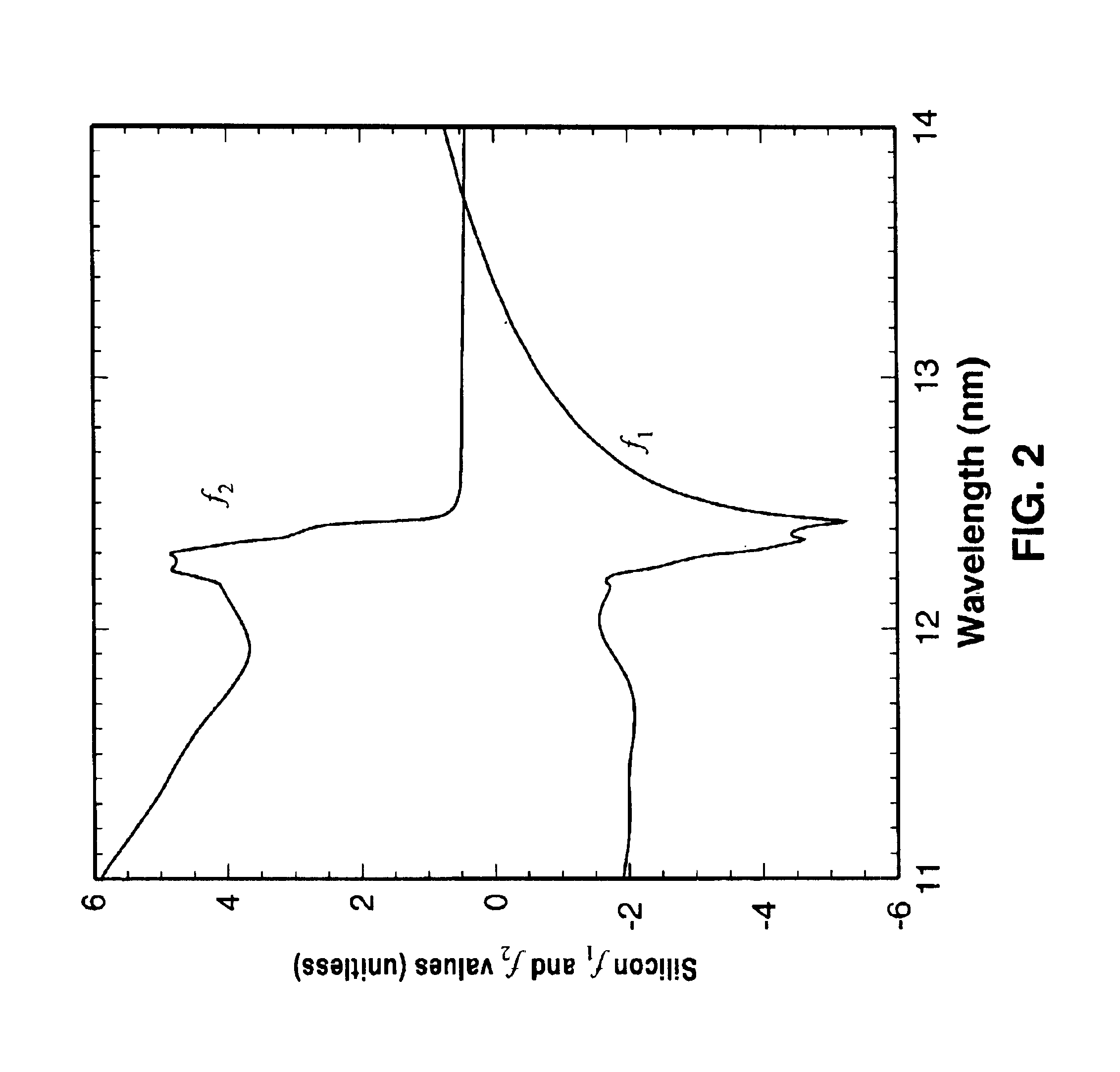Achromatic fresnel optics based lithography for short wavelength electromagnetic radiations
- Summary
- Abstract
- Description
- Claims
- Application Information
AI Technical Summary
Benefits of technology
Problems solved by technology
Method used
Image
Examples
Embodiment Construction
[0040]The preferred embodiments of lithography methods and systems based on an achromatic Fresnel objective, or AFO lens, according to the present invention will now be described. The inventive AFO combines a diffractive Fresnel zone plate for high-resolution image transfer, and a refractive Fresnel lens for chromaticity correction. It can achieve the demonstrated high resolution of zone plates, with the spectral bandpass of multilayer-coated optics. An AFO lithography (AFOL) system according to the present invention is capable of sub-30 nm patterning over an axially symmetric printing field of many square millimeters. The calculated maximum throughput of the imaging system consisting of a condenser and an AFO camera is >20%. The AFOL's axially symmetric transmission imaging system is similar to that of the current generation lithography technology and, therefore, it may be considered as its ultimate extension.
[0041]It will be appreciated that a Fresnel zone plate is a diffractive i...
PUM
 Login to View More
Login to View More Abstract
Description
Claims
Application Information
 Login to View More
Login to View More - R&D
- Intellectual Property
- Life Sciences
- Materials
- Tech Scout
- Unparalleled Data Quality
- Higher Quality Content
- 60% Fewer Hallucinations
Browse by: Latest US Patents, China's latest patents, Technical Efficacy Thesaurus, Application Domain, Technology Topic, Popular Technical Reports.
© 2025 PatSnap. All rights reserved.Legal|Privacy policy|Modern Slavery Act Transparency Statement|Sitemap|About US| Contact US: help@patsnap.com



